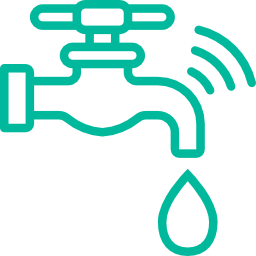What is industrial wastewater monitoring?

Industrial wastewater monitoring is the process of systematically observing, measuring, and analyzing the standard and quantity of wastewater generated by industrial services. Go to the website is a important part of environmental management within the industrial sector, serving several functions:
Compliance with Regulations: Industrial wastewater monitoring ensures that industrial discharges adjust to native, regional, and national rules and permits. These regulations set limits on the concentration of particular pollution, such as heavy metals, natural compounds, and nutrients, within the wastewater effluent.
Environmental Protection: Monitoring helps defend natural water our bodies by preventing the release of pollution that may harm aquatic ecosystems, contaminate drinking water sources, and disrupt the stability of ecosystems.
Public Health: Ensuring that industrial wastewater is properly handled and monitored helps defend public well being by preventing the discharge of dangerous substances that can contaminate ingesting water supplies.
Resource Management: Efficient wastewater monitoring and remedy may help industries preserve water resources and cut back the environmental impact of water use.
Operational Efficiency: Monitoring allows industries to identify and address issues such as tools malfunctions, process inefficiencies, or improper waste disposal practices, which may lead to increased operational prices and downtime.

Data Collection and Reporting: It offers data that might be reported to regulatory agencies, demonstrating compliance with discharge permits and environmental standards.
Industrial wastewater monitoring sometimes includes the next actions:
Sampling: Collecting consultant samples of wastewater at varied points within the industrial process, in addition to at the discharge point. These samples are analyzed for various parameters, together with pH, chemical oxygen demand (COD), biological oxygen demand (BOD), suspended solids, heavy metals, and particular contaminants related to the business.
Analysis: Laboratory testing of wastewater samples to measure the concentrations of different pollutants and to determine if they meet regulatory requirements.
Continuous Monitoring: The use of automated monitoring tools, such as sensors and analyzers, to measure and report key parameters in real-time. Continuous monitoring provides instant suggestions, allowing for quick response to deviations from set requirements.
Record Keeping: Maintaining detailed information of sampling and monitoring information, which is usually required for regulatory compliance and reporting.
Compliance Reporting: Submitting reports to regulatory authorities detailing the outcomes of wastewater monitoring and confirming compliance with discharge permits.
Process Optimization: Using monitoring knowledge to optimize industrial processes, scale back waste generation, and improve the effectivity of wastewater remedy methods.
Industrial wastewater monitoring is tailored to the specific needs of each facility, considering the trade, the kinds of pollution generated, and the regulatory framework in place. The objective is to make certain that wastewater discharges do not pose a risk to the surroundings or public health while permitting industries to function efficiently and sustainably..
